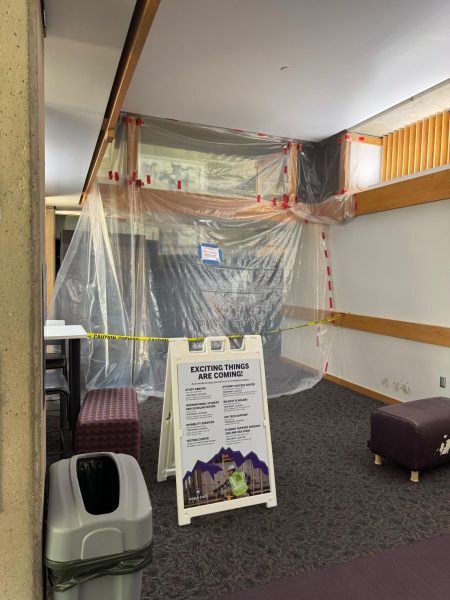A fish-eye view on stem cells
Weber State University hosted a neuroscience seminar on Sept. 23 as part of an ongoing lecture series. Elizabeth Sandquist, assistant professor of zoology and neuroscience, led the seminar and explored the world of gene therapy and her research involving zebrafish.
The current state of gene therapy is limited with only certain forms of genetic vision loss and cancer procedures gaining FDA-approval. Although potentially dangerous, studies are in the works to expand the applications of gene therapy.
“If you mutate that gene, and it’s broken, it’s like you’ve broken the brakes of a car,” Sandquist said.
It has been found that in mammals with a recent brain injury, stem cells migrate through the body to get to the injured location, but rarely make the journey. Zebrafish, native to south Asia, have the rare ability to heal themselves, hiding evidence of the prior injury in the process.
In her research, Sandquist takes young zebrafish, which are about the size of a mosquito, and gives them a superficial injury. This is performed by shining a bright light over them for roughly half an hour, injuring them enough to reveal the zebrafish’s regenerative properties in producing stem cells to heal the damage.
In her studies, Sandquist is attempting to find whether the stem cells are coming from the müller-glia or dividing cells. These dividing cells in young zebrafish are used to develop the eyes as the fish grows.
However, if the stem cells are coming from the müller-glia, this could lead to a breakthrough in human studies due to a similar construction between human and zebrafish eyes.
“The hope is that the better we can understand that system, the better we might be able to artificially hack that system,” WSU Neuroscience program director Aminda O’Hare said while discussing the importance of Sandquist’s work.
During research, Sandquist puts a zebrafish with a slight injury in a drop of agarose to keep it from moving. The fish is then put under a microscope where they take images of its eyes every five to ten minutes, observing the stem cells as they travel around the eye to repair damage.
Sandquist plans to euthanize the fish in order to freeze the cellular activity so they can observe the cells at another point in time.
“If we can master stem cells, then we can regrow anything,” O’Hare said.














